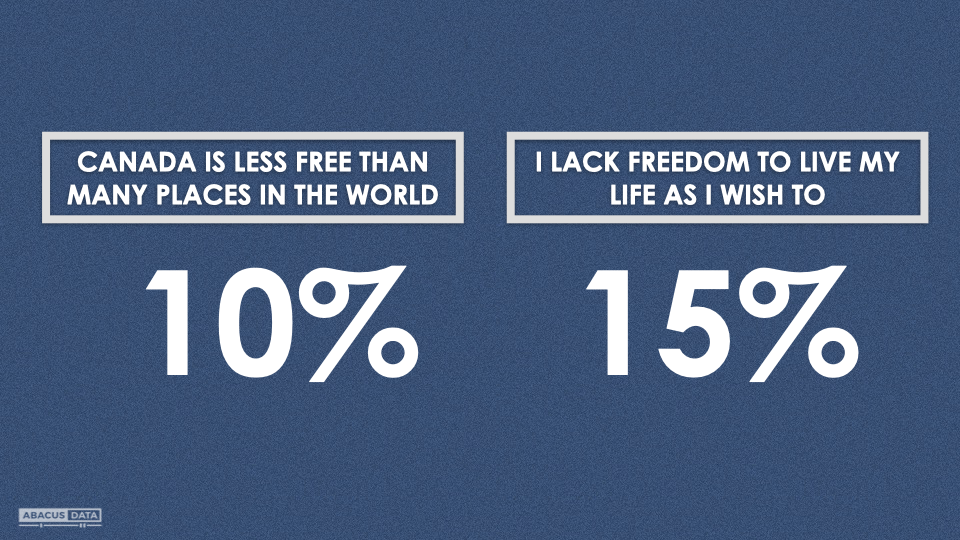Latest Public Opinion on National Pharmacare: Canadians prefer a dollar-wise focus on those who have no insurance coverage
March 13, 2019
Our most recent survey of attitudes towards a Canadian pharmacare initiative commissioned by the Canadian Life and Health Association (1,200 interviews, conducted between February 26 and March 3, 2019) reveals strong support for the idea of helping improve the affordability of medicine for those who have no drug insurance today, coupled with a broad desire to see any federal tax expenditures focused on those who need help and lack coverage today.
KEY FINDINGS – CURRENT AFFORDABILITY
• 93% agree “it’s time to fix this gap in Canadian health care and make sure no one suffers because they cannot afford medicine”
• 83% agree “government should not spend tax dollars on those who already have decent drug coverage”
• 3 out of 4 respondents (77%) have some form of insurance coverage that helps them with the cost of medicines they need. 23% of respondents have no coverage.
• About 3 out of 4 Canadians (73%) report that the medicines they need are affordable for them. This includes 83% among those who have group health insurance benefits.
• Among respondents who have no coverage of any kind today, 45% say medicines are unaffordable.
• Most (74%) of those with insurance have a co-pay requirement. Almost all of those who do have a co-pay say the cost is affordable or affordable enough (88%).

KEY FINDINGS – NATIONAL POLICY CHOICES
A large majority (86%) say the Task Force on national pharmacare is an important or very important initiative. This cuts across party lines and includes people who have coverage today as well as those who do not. Half say that the issue will affect how they will vote this fall and half say it will have little or no effect.
• A majority (76%) think it is likely that if the federal government provided free drug coverage to everyone, employers might see this as an opportunity to drop the rest of the group benefits that employees enjoy. Among those in a group plan today, half say there is a good or very good chance that this could happen to their group plan.
• Canadians would put the greatest priority on helping seniors on fixed incomes who have a challenge with deductibles, followed by people working lower-wage jobs with no benefits.
• At the top of the list of considerations that people want to see taken into account in the design of a pharmacare initiative are i) ensuring those with no coverage can afford the drugs they need, ii) negotiating lower prices with pharmaceutical companies, and ii) limiting the impact on taxes or the deficit. Each is seen as crucial or very important by large majorities.
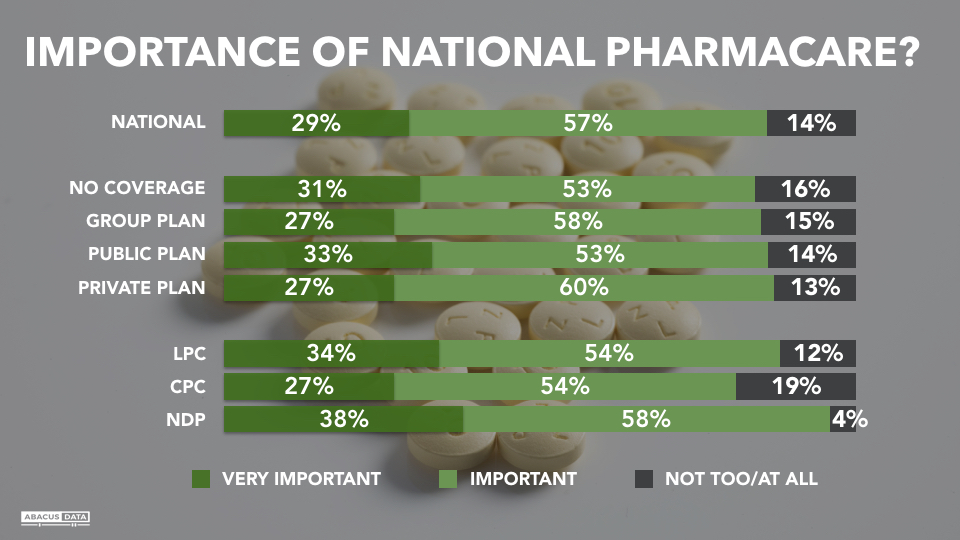

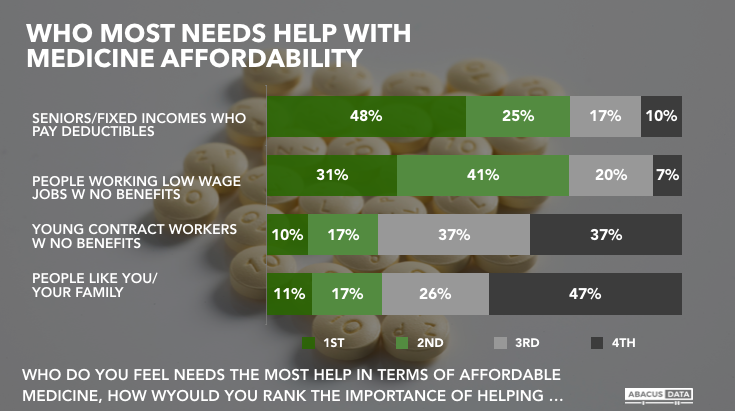
We tested two policy options: a plan for companies and government to collaborate to ensure current plans stay intact while everyone has affordable access to the medicines they need, and the idea of a single plan covering everyone, but possibly with fewer drugs covered than some might enjoy today. The first approach found 94% support, the second 55% opposition.
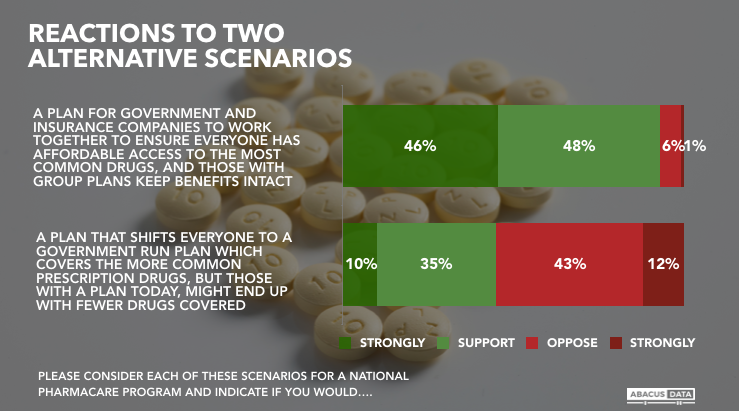
Presented with a choice between one party promising to “cover the most common drugs for those with no insurance” and another party promising a “government program that would cover everyone with a narrower range of drugs than those who currently have insurance are covered for” 70% favoured the approach that targeted help to those without insurance. This result was highly consistent across party lines.
Finally, we tested a scenario where the Liberals might propose a targeted program and the Conservatives might argue that the initiative was unneeded and unaffordable. In that scenario, 65% said they would side with the Liberals in support of a targeted approach.

KEY FINDINGS – TRUST
Employers, doctors, patient advocacy groups and group benefits providers enjoy the highest levels of trust when it comes to this policy issue, with pharma companies finding the least amount of public trust.
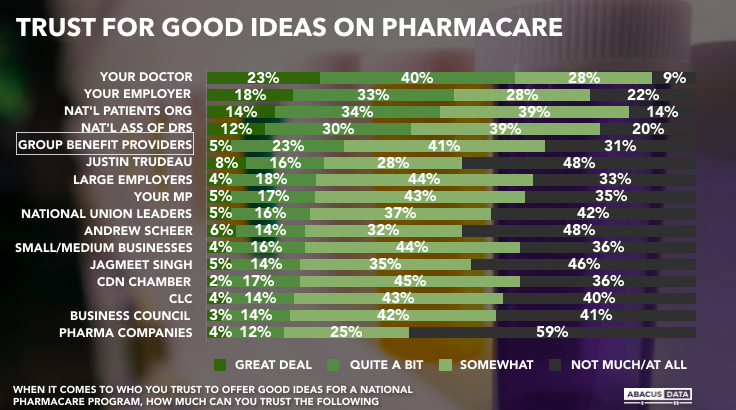
CONCLUSIONS
Most Canadians find they can afford the medicines they need today if they have an insurance plan of one sort or another. About half of those who don’t have insurance say their drugs are unaffordable. Canadians broadly like the initiative of the federal government to close this gap in Canadian health care, but the clear preference is to do nothing that would put current coverage levels at risk for those who have insurance and to target federal expenditures on those who don’t have coverage today.
METHODOLOGY
The survey was commissioned by the Canadian Life and Health Insurance Association survey was conducted online with 1,200 Canadians aged 18 and over from February 26 to March 3, 2019. A random sample of panelists was invited to complete the survey from a set of partner panels based on the Lucid exchange platform. These partners are double opt-in survey panels, blended to manage out potential skews in the data from a single source.
The margin of error for a comparable probability-based random sample of the same size is +/- 2.0%, 19 times out of 20. The data were weighted according to census data to ensure that the sample matched Canada’s population according to age, gender, educational attainment, and region. Totals may not add up to 100 due to rounding.

